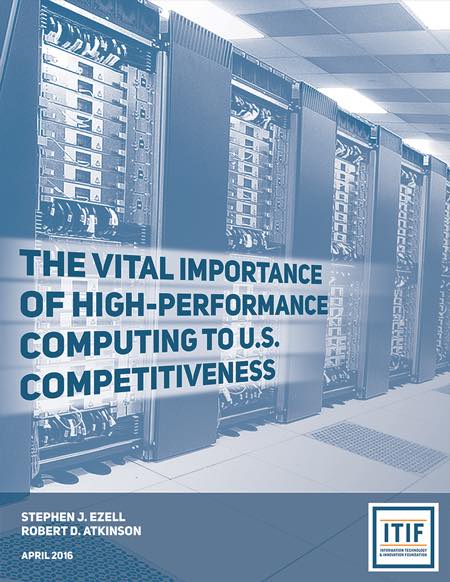 Today the Information Technology and Innovation Foundation (ITIF) published a new report that urges U.S. policymakers to take decisive steps to ensure the United States continues to be a world leader in high-performance computing. Otherwise, it risks being surpassed by China, Japan, and the European Union at the expense of its economic competitiveness and national security.
Today the Information Technology and Innovation Foundation (ITIF) published a new report that urges U.S. policymakers to take decisive steps to ensure the United States continues to be a world leader in high-performance computing. Otherwise, it risks being surpassed by China, Japan, and the European Union at the expense of its economic competitiveness and national security.
The ITIF report comes in the wake on recent rumblings that China is preparing a pair of 100 Petaflop supercomputers for the upcoming TOP500 list, which will be announced in June at ISC 2016 in Frankfurt. Systems of that scale are not expected to be operational in the US until late 2017 or beyond.
From efficiently designing next-generation products, to empowering scientific discovery, to ensuring the nation’s security, high-performance computing undergirds America’s defense and industrial competitiveness,” said Stephen Ezell, ITIF vice president for global innovation policy and coauthor of the new report. “The U.S. is home to three of the five fastest supercomputers in the world, but China is home to the global frontrunner and plans to launch an even faster supercomputer this year. Japan and the EU have also introduced concerted national programs to achieve high-performance computing leadership. While America is still the world leader, other nations are gaining on us, so the U.S. cannot afford to rest on its laurels. It is important for policymakers to build on efforts the Obama administration has undertaken to ensure the U.S. does not get out paced.”
High-performance computing—using “supercomputers” and massively parallel processing techniques to solve complex computational problems through modeling, simulation, and data analysis—is critical to scientific leadership and national security, the report explains. Commercial innovators also leverage high-performance computing to achieve breakthroughs in a wide range of applications, including in manufacturing, life sciences, chemical engineering, electronics, and energy. The report details new areas of potential discovery for manufacturing and industrial applications, as well as health-care and scientific research.
Yet the report shows how competition for global leadership in this area is intensifying. For example, while the United States today is home to 199 of the world’s 500 most powerful supercomputers, this number is down 14 percent from the previous year and represents the fewest number of supercomputers the United States has placed in the Top500 since the list’s inception in 1993. This drop is occurring while other nations are simultaneously building up their own national strategies to strengthen their high-performance computing ecosystems with the goal of edging out the United States.
Recognizing the heightening competition, President Barack Obama announced the U.S. National Strategic Computing Initiative (NSCI) in July 2015. To build on this program, ITIF offers the following policy recommendations:
- Congress should hold hearings on the NSCI and the intensifying race for global high-performance computing leadership.
Congress should authorize and appropriate funding levels for the NSCI as requested in the Obama administration’s FY 2017 budget. - Congress and the administration should reform export control regulations to match the reality of current high-performance computing systems.
- The administration should continue to make technology transfer and commercialization activities a priority focus of America’s network of national laboratories.
- The administration should emphasize high-performance computing in federal worker training and retraining programs and in relevant Manufacturing Extension Partnership engagements.
This isn’t just about making sure U.S. vendors are competitive,” said ITIF President Robert D. Atkinson, coauthor of the report. “This is about building a robust U.S. high-performance computing ecosystem focused on adoption and use, not just production. This will entail broadening knowledge and training and encouraging government agencies to use supercomputers for specific purposes like defense, renewable energy, weather forecasting, and more. Federal R&D investment in frontier technologies has been a catalyst for U.S. development of world-leading technology industries, and it will continue to be critical for leadership in high-performance computing as well.”




